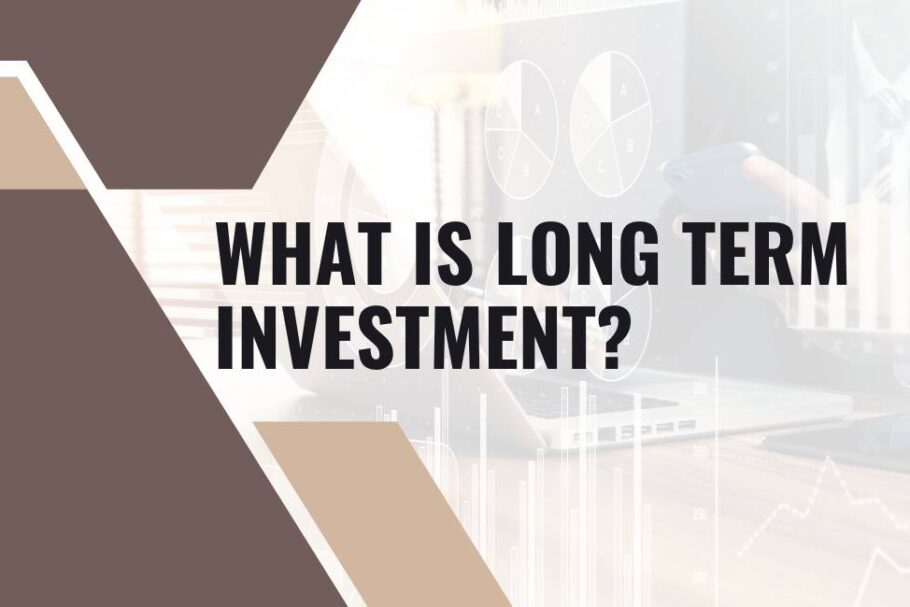What is Long Term Investment?

An investment is a financial instrument held for an extended period as opposed to one that must be liquidated within a short time.
It can refer to either the purchase or sale of a security – stocks, bonds, physical assets such as commodities or real estate, and intangible assets such as intellectual property.
Some investments are: cash deposits with banks, notes and bonds issued by governments, and company ownership shares through stock exchanges.
One can also invest in intangible things like ideas (e.g., patents), business concepts, real estate, intellectual property, etc.

The economy of the United States is very different from that the a corporate-controlled economy which is expected in the rest of the world. The capital markets in America are dominated by institutions such as pension funds and mutual funds that directly invest in the stock markets rather than large corporations. The system makes it possible to make money on a broader range of investment vehicles than in other countries with more corporate-oriented economies.
For example, one can invest in a great company and make money from the success of the company’s profit. Or one can invest in a small business and make money from the profits of that business. Also, because there are individual investors, the entire economy is not in a bubble or crash mode because there is more than one source of capital flowing into stocks or commodities.
American investors tend to look for tangible assets in which to invest. Risk is weighed against opportunity, and the average American investor looks for small-cap stocks and private equity or “special situations,” where the price is not the only determinant of investment worth. Factors such as growth, demand, management quality, and share price are considered.
Another reason for the success of this form of investment is that investors tend to buy shares that have a history of paying dividends rather than solely focusing on capital gains from price appreciation.
Long-Term Investment (LTI) refers to an investment strategy for long-term investing. LTI is often short for “longevità” (“long life”) and “investimento a lungo periodo” (“long investment”).
The investment strategy of LTI relies on the fact that most of the returns from retail investors are not realized for several years following the purchase.
This means the investor can afford to hold cash reserves over the amount needed for immediate expenditure. Both investors and financial institutions use LTI.
The LTI strategy can be applied to various asset classes. However, mutual funds are a popular way to implement the strategy using a single instrument due to their flexibility and performance.
There are two forms of funds that use the Long-Term Investment strategy:
The first form of an LTI fund is a pooled fund, which a mutual fund or closed-end investment fund can represent. Pooling is usually made by borrowing money from other investors and investing this money in the portfolio provided by the manager.

Another Fund that implements LTI strategies is Open-End Funds (ETFs). An OEF is an investment company with shares distributed continuously.
Among these two categories of funds, the second type is a more “democratized” way of investing. These types of FI (Funds of Funds) are also called “funds for investors” because they provide the investor with a portfolio whose composition can be changed, unlike pooled funds and ETFs.
Another critical issue is selecting the right portfolio manager (PM) to create a strong performance from the Fund. The Fund usually offers the possibility to hire a PM based on their track record and experience.
Selecting the right PM is crucial because it sets the benchmark for a good performance. A more robust performance will create a solid investor base for future funds.
Among other advantages, closed-end funds:
Over time LTI strategies can offer as much as 20 times the return on your investment compared to market returns (both stocks and bonds).
However, the strategy has some disadvantages. The main disadvantage is a lack of liquidity and transparency. In addition, investing in closed-end funds involves expenses of the Mutual Fund (the “management fee”), which could be high – as much as 2% per year.
The investors’ desire for long-term returns is sometimes at odds with the fund manager’s need to meet the investor every quarter during an open-ended fund or ETF’s fiscal year.
While the potential exists for very high investment returns, LTI is not for lifelong investing. It is for investors willing to commit to a long-term strategy, which can yield up to 20 times the amount invested.
It is also important to note that investors must be prepared to handle gains and losses as they occur.
The idea of “longevità” is based on the fact that, as an investor, you are prepared to wait for a more extended period before realizing your investment gains.
For this reason, LTI strategies do not limit the withdrawal of funds from your portfolio; they only ask investors to commit to the long-term strategy.